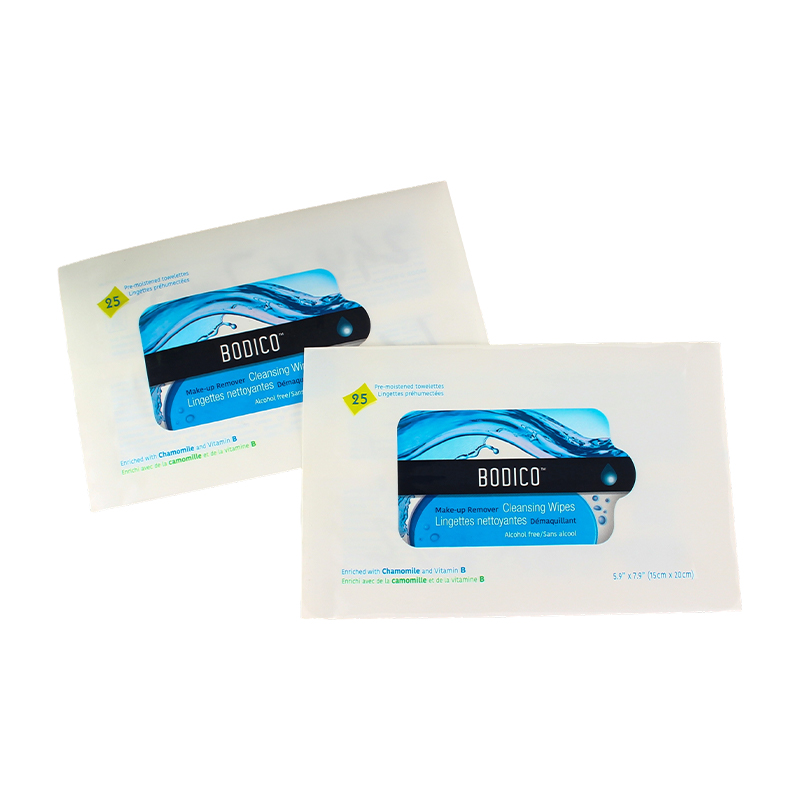2025-07-24
The global wet wipes industry continues to expand rapidly, driven by increasing consumer awareness of hygiene and convenience. Central to this growth is the evolution of wet wipes packaging bags—an often overlooked yet critical element that ensures product freshness, usability, and brand appeal. As manufacturers seek to differentiate their products and meet rising expectations, wet wipes packaging bags have undergone significant innovation in materials, design, and functionality.
The Role of Packaging in Wet Wipes Quality
Wet wipes are pre-moistened products that require packaging solutions capable of maintaining moisture levels and preventing contamination throughout their lifecycle. Packaging bags are more than mere containers; they act as protective barriers that extend shelf life, safeguard hygiene, and provide consumers with ease of use. Failure to maintain proper moisture levels can render wet wipes ineffective and compromise user satisfaction.
Therefore, wet wipes packaging bags are engineered with multiple priorities: airtight sealing to prevent moisture evaporation, durability to withstand handling and transport, and features that enhance convenience and aesthetics.
Material Advances Enhancing Protection and Durability
One of the notable advancements in wet wipes packaging bags has been the use of multi-layer films combining different materials to maximize performance. Polyethylene (PE), polypropylene (PP), and polyethylene terephthalate (PET) are commonly layered to achieve strength, flexibility, and barrier properties.
These materials form composites that block moisture, oxygen, and light, which can degrade the wipes' solution or fibers. Some packaging also incorporates aluminum foil or metallized layers for additional barrier protection, particularly for sensitive or specialty wipes.
Durability is crucial, as packaging must resist tears, punctures, and leaks during shipping and handling. Modern wet wipes packaging bags often feature reinforced seams and thicker films without compromising flexibility or weight, ensuring the wipes arrive in condition.
Innovative Design Features for User Convenience
Manufacturers are paying close attention to the consumer experience, to packaging designs that enhance convenience and usability. Resealable closures, such as adhesive labels, zip-lock zippers, or flip-top lids, enable easy access while maintaining airtight seals for long-term moisture retention.

The ability to open and reseal packaging repeatedly reduces waste and keeps wipes fresh even after multiple uses. Some packaging bags also integrate ergonomic shapes and stand-up pouches that improve storage efficiency on shelves and in consumers’ homes.
Transparency windows in packaging allow users to monitor the quantity of wipes remaining, adding to the user-friendly experience. Clear labeling and attractive graphics further support brand identity and consumer trust.
Sustainability Trends in Wet Wipes Packaging
As environmental consciousness grows among consumers and regulators, sustainability has become a key focus area in wet wipes packaging development. Brands are increasingly adopting eco-friendly materials such as recyclable mono-material films or bio-based polymers that offer similar barrier and durability properties.
Some companies are experimenting with compostable packaging options designed to break down under specific industrial conditions, aligning with circular economy goals. Refill pack solutions and reduced packaging sizes also contribute to plastic waste.
Manufacturers face challenges in balancing sustainability with functionality, as reducing material thickness or switching materials can impact barrier performance. Nonetheless, ongoing innovations and collaborative industry efforts are paving the way for greener wet wipes packaging solutions.
Market Applications and Customization Opportunities
Wet wipes packaging bags serve a wide range of applications, including baby care, personal hygiene, household cleaning, disinfecting, makeup removal, and pet care. Each category demands specific packaging considerations related to moisture retention, barrier protection, and usability.
Customization options abound in packaging design, enabling brands to differentiate their products through size, shape, print quality, and added features. Tamper-evident seals, child-resistant closures, and scent control liners are examples of innovations tailored to niche markets or regulatory requirements.
Digital printing technologies have also enhanced the ability to produce high-resolution graphics and variable data printing, allowing for targeted marketing campaigns and personalized packaging.